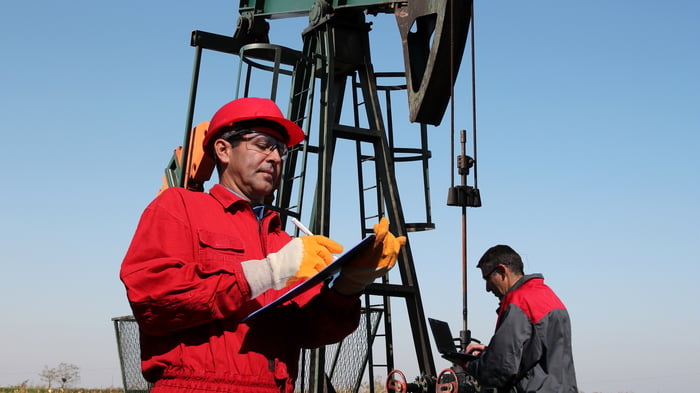What happened
The price of BP Prudhoe Bay Royalty Trust (BPT -1.28%) jumped nearly 12% in the first month of the new year, according to data provided by S&P Global Market Intelligence. That advance comes on the heels of a bruising decline to end 2018, during which BP Prudhoe fell about 40% in roughly a two-month span. These ups and downs, however, have a logic to them if you understand what this entity is meant to do.
So what
BP Prudhoe Bay Royalty Trust is not an operating company. It is a trust, as its name implies, that owns a royalty interest in the oil produced by BP in the Prudhoe Bay. Basically the only things the trust does is collect the cash generated by that royalty interest, pay the costs of operating the trust, and dispense the remaining cash to shareholders. Which partly explains the extraordinarily high yield of roughly 20%.

Image source: Getty Images
That said, BP Prudhoe's ups and downs historically have ended up tracking oil prices, since it is effectively just a proxy for oil. That late 2018 drop was almost exactly the same size as the one experienced by Brent crude (an international oil benchmark). And the advance in early 2019 basically tracked along with oil as well. In many ways, BP Prudhoe is an interesting way to play the oil space, since it allows you to effectively bypass the middleman (by owning oil drillers, for example) and get almost direct exposure to the oil itself.
But there's a fly in the ointment here, and that 20% yield is the hint that there could be problems ahead. According to the trust's 2017 annual report (2018 isn't available yet), 2019 could be the last year it pays distributions. To be fair, the yield has spiked up to the 20% range a number of times in the past, and there's a lot more to understand here since BP Prudhoe Royalty Trust is a complex entity. However, that the trust would put that kind of statement into a regulatory filing should be a pretty alarming warning, particularly if you are an income investor.
Now what
BP Prudhoe's ups and downs are tracking along with oil, as you would expect for an entity such as this. However, investors looking for oil exposure should probably avoid the trust. The warning that 2019 could be the last year of distributions is not something most investors should be tangling with in their portfolios. And if you are an income investor, you'll definitely be better off with other options if you are interested in adding oil to your portfolio.
Check out the latest earnings call transcripts for companies we cover.





